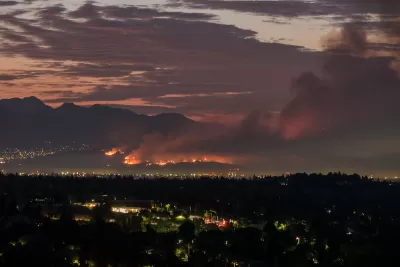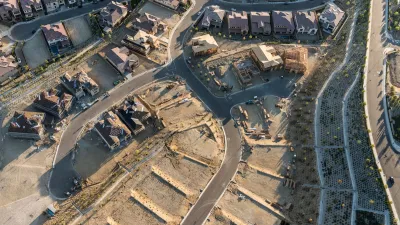A new study estimates that LA County must invest billions of dollars before 2040 to protect residents from extreme heat, increasing precipitation, worsening wildfires, rising sea levels, and climate-induced public health threats.

With climate-driven disasters in Southern California getting more intense each year, it is more important than ever for communities to invest in a wide range of climate adaptation and resilience projects and measures. As reported by Hayley Smith of the LA Times, a recently released new study offers estimated costs of preparing for and adapting to 14 different climate impacts on municipal, county, state, and federal governments in Los Angeles County.
According to the report by The Center for Climate Integrity, the most costly adaptation categories are related to precipitation and heat, including an estimated $4.3 billion for improved stormwater management, $2.5 billion for cool pavement investments, and $1.4 billion for tree canopies to combat urban heat islands. Other costs include wildfire mitigation, coastal defense and infrastructure protection, building upgrades for cooling and air conditioning, and responses to vector-borne diseases.
The study estimates that municipal, county, state, and federal governments will need to expend at least $12.5 billion through 2040, more than $9 billion of which will be incurred by municipal governments. The total cost equates to about $780 million annually to protect communities in L.A. County from extreme heat, changing precipitation, wildfires, rising sea levels, and climate-induced public health threats.
FULL STORY: L.A. County faces $12.5 billion in climate costs through 2040, study says

Alabama: Trump Terminates Settlements for Black Communities Harmed By Raw Sewage
Trump deemed the landmark civil rights agreement “illegal DEI and environmental justice policy.”

Planetizen Federal Action Tracker
A weekly monitor of how Trump’s orders and actions are impacting planners and planning in America.

The 120 Year Old Tiny Home Villages That Sheltered San Francisco’s Earthquake Refugees
More than a century ago, San Francisco mobilized to house thousands of residents displaced by the 1906 earthquake. Could their strategy offer a model for the present?

In Both Crashes and Crime, Public Transportation is Far Safer than Driving
Contrary to popular assumptions, public transportation has far lower crash and crime rates than automobile travel. For safer communities, improve and encourage transit travel.

Report: Zoning Reforms Should Complement Nashville’s Ambitious Transit Plan
Without reform, restrictive zoning codes will limit the impact of the city’s planned transit expansion and could exclude some of the residents who depend on transit the most.

Judge Orders Release of Frozen IRA, IIJA Funding
The decision is a victory for environmental groups who charged that freezing funds for critical infrastructure and disaster response programs caused “real and irreparable harm” to communities.
Urban Design for Planners 1: Software Tools
This six-course series explores essential urban design concepts using open source software and equips planners with the tools they need to participate fully in the urban design process.
Planning for Universal Design
Learn the tools for implementing Universal Design in planning regulations.
Clanton & Associates, Inc.
Jessamine County Fiscal Court
Institute for Housing and Urban Development Studies (IHS)
City of Grandview
Harvard GSD Executive Education
Toledo-Lucas County Plan Commissions
Salt Lake City
NYU Wagner Graduate School of Public Service





























